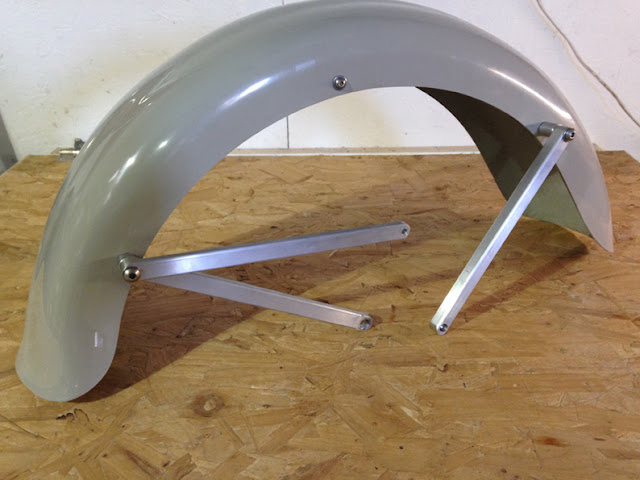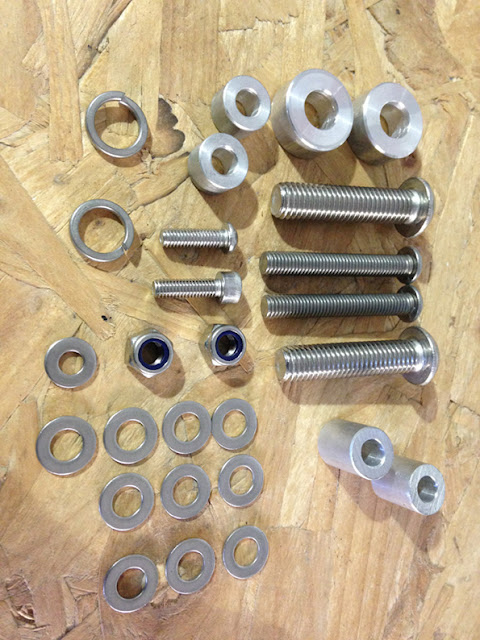As an introduction though, why not go to the Blog overview first.
See SAFETY UPDATE further down re 6mm SCH screw/bolt.
Here is a mudguard complete with all stays fitted. The pictures below show how it is all mounted up.
This shot shows the rear of the mudguard with the upper and lower stays fitted. Please note that a later post shows that one of the stays has now been superceded.
This shot shows the front stay fitted together with the angled spacer. The sequence for assembly of the upper fixture is: M8 55mm SBH (socket button head screw), washer, stay, angled spacer, washer, mud guard, radiused stiffener (already fitted), washer, 8mm nylock nut.
Looking inside the mudguard, the radiused stiffener piece is visible to which the stays are bolted. Note that for the purpose of this picture, nylock nuts are not shown, but must be used in reality.
First thing is to identify the three different lengths of mudguard stay. The radiused stiffener will already have been fitted to the mudguard. The shorter but thicker stay is for the front.
Identify all of the components required for assembly.
This shot shows the 2 rear stays fitted. The sequence is as follows: Identify M8 - M6 stay and M8 - M12 stay. M8 55mm SBH, washer, M8-M6 stay, M8-M12 stay, M8 10 x 16 spacer, washer, mud guard, radiused stiffener, washer, nylock nut.
This shot shows the M6 fitment of the upper stay into the upper position of the alloy upright. The shot below shows this in close up. All bolts/screws into the alloy upright must be held by Locktite or similar.
All bolts/screws into the alloy upright must be held by Locktite or similar.
This shot shows the lower M6 SCH (socket cap head screw) into the forward position.
All bolts/screws into the alloy upright must be held by Locktite or similar.
Safety Update 24/10/18: The 20mm M6 SCH screw/bolt should be changed to a standard 8.8/12.8 SCH screw/bolt as stainless steel SCH 6mm screw/bolts in this position have been found to shear.
This shot shows the M8-M12 stay bolted into the brake caliper and the alloy upright. The sequence is as follows: M12 SBH 50mm screw, spring washer, stay, M12 25 x 10 alloy spacer, through the caliper into the alloy upright.
All bolts/screws into the alloy upright must be held by Locktite or similar.
Side view of mud guard mounted up.
Rear view of mounted mud guard.




























